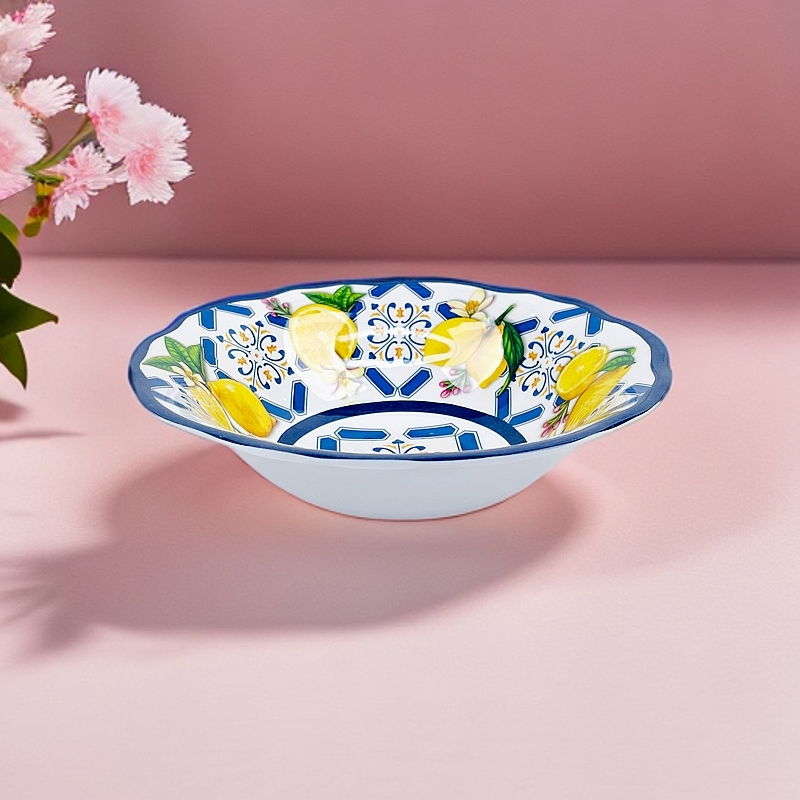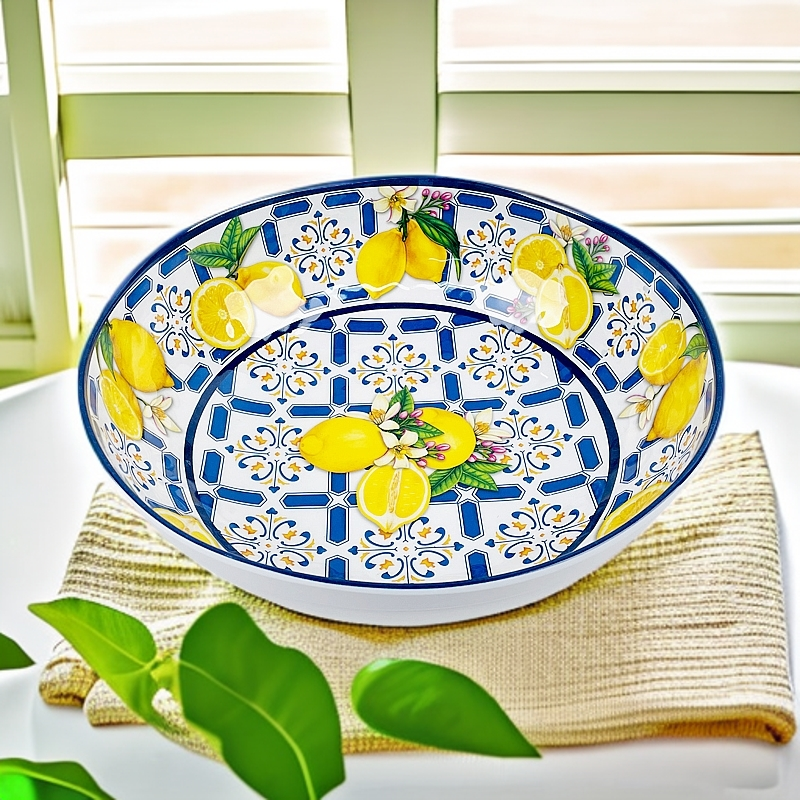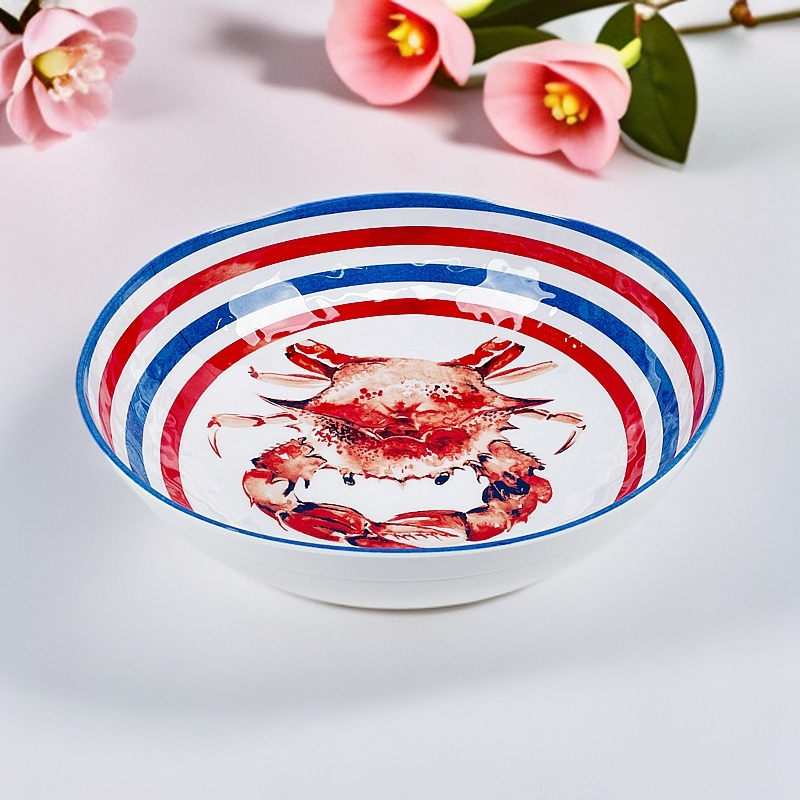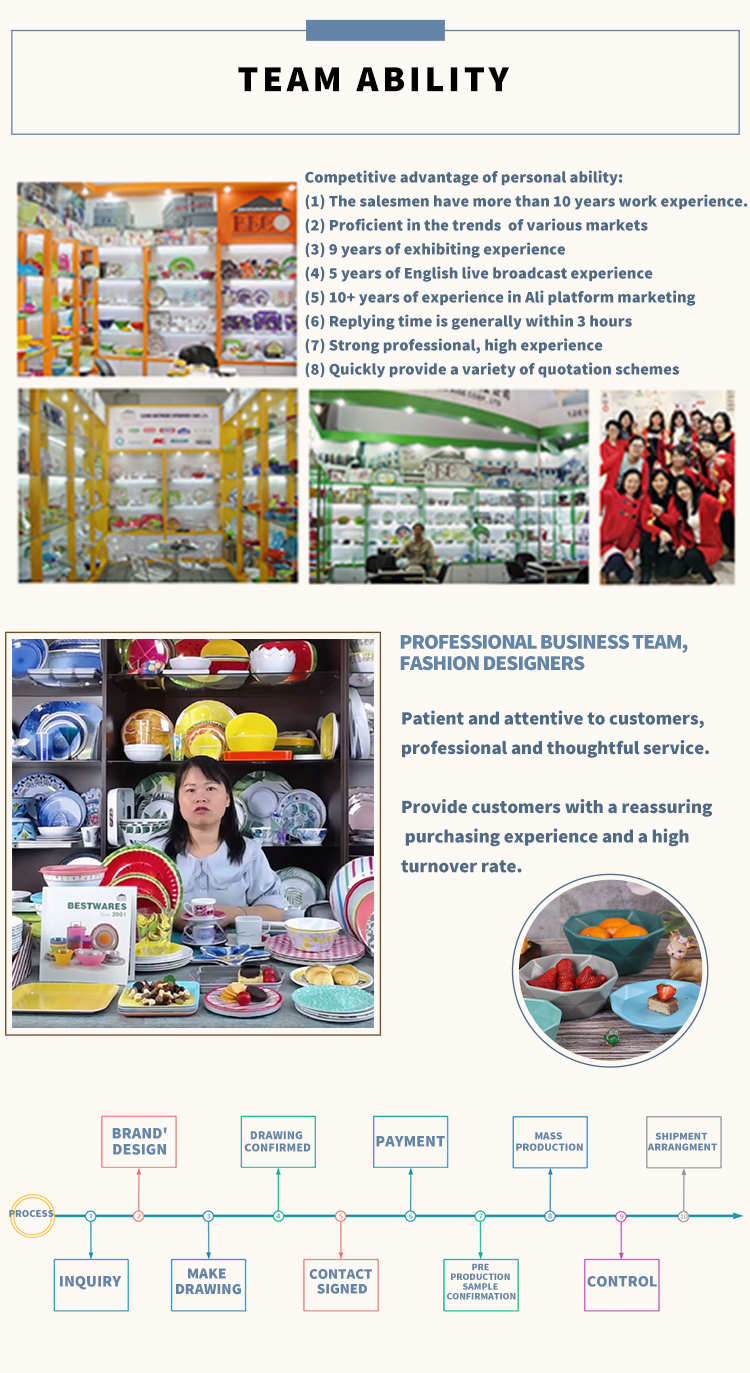When selecting tableware for high-volume foodservice environments such as restaurants, cafeterias, and hospitals, durability is a primary concern. Tableware must endure the pressures of daily handling, washing, and serving while retaining its aesthetic appeal and functionality. Melamine tableware has emerged as a leading choice due to its ability to withstand the rigors of high-intensity use. In this article, we will delve into how melamine tableware performs under durability tests, highlighting its superior strength and other key advantages over traditional materials like ceramic or porcelain.
1. Impact Resistance: Melamine Thrives Under Pressure
One of the most significant benefits of melamine tableware is its resistance to breakage. In durability tests, melamine consistently outperforms ceramic and porcelain in impact resistance. Unlike traditional tableware that can chip, crack, or shatter easily when dropped, melamine has the ability to absorb impact, ensuring it remains intact even after accidental drops. This makes melamine the ideal choice for high-traffic dining environments, where accidents are common, and replacement costs can quickly add up.
2. Scratch and Stain Resistance: Long-Lasting Aesthetics
Melamine is highly resistant to scratches and stains, which is particularly important in foodservice settings where frequent handling is inevitable. During durability testing, melamine tableware was shown to retain its appearance even after repeated use with utensils, exposure to hot foods, and frequent washing. Unlike porcelain or ceramic tableware, which may develop visible wear and tear or discoloration over time, melamine retains its glossy finish and pristine look. This feature makes melamine a preferred option for businesses that want long-lasting, aesthetically appealing tableware without the frequent need for replacement.
3. Lightweight Yet Strong: Easy Handling for High-Volume Operations
The strength of melamine does not come at the cost of weight. Unlike ceramic or porcelain, which can be heavy and cumbersome to handle, melamine is lightweight, making it easy to stack, transport, and serve. This is particularly beneficial in busy foodservice environments, where efficiency and speed are essential. The lightweight nature of melamine also reduces the physical strain on staff, contributing to smoother operations, especially in high-volume settings like hospitals or large-scale cafeterias. In durability tests, the lightness of melamine combined with its strength makes it an ideal solution for foodservice establishments where both functionality and ergonomics matter.
4. Heat and Cold Resistance: Versatile Performance Across Meal Types
In addition to its physical toughness, melamine also performs well under varying temperatures. It is resistant to both heat and cold, making it suitable for a wide range of food types, from hot meals to cold salads. While melamine is not microwave safe, it can withstand high temperatures during food service without warping, cracking, or losing its structural integrity. This makes melamine an excellent choice for restaurants and cafeterias that serve hot meals in large quantities or hospitals that require durable trays for patient meals.
5. Cost-Effective Durability: A Smart Investment for Foodservice Operations
The durability of melamine tableware also translates into significant cost savings. Due to its resistance to breakage, scratches, and stains, melamine has a much longer lifespan than porcelain or ceramic tableware. This reduced need for frequent replacements means lower long-term operating costs for restaurants, hotels, schools, and hospitals. Durability testing shows that melamine can withstand hundreds of wash cycles without showing signs of wear, making it a cost-effective choice for establishments that require tableware that performs well over time while remaining affordable.
6. Environmental Considerations and Sustainability
Melamine's durability contributes to its sustainability. As it requires fewer replacements compared to more fragile tableware options, melamine helps reduce waste in foodservice operations. Moreover, its long lifespan means fewer resources are consumed in the manufacturing process, which is a benefit for businesses striving to lower their environmental impact. Many melamine products are also made from BPA-free, food-safe materials, ensuring that they meet health and safety standards while also being environmentally friendly.
Conclusion
Melamine tableware excels in durability tests, consistently proving to be a robust and reliable choice for high-intensity use. Whether it's impact resistance, scratch and stain durability, or its lightweight nature, melamine offers a variety of advantages over traditional tableware materials. Its ability to maintain its aesthetic appeal, along with its long-lasting performance, makes it a smart investment for foodservice operators looking for cost-effective, high-quality tableware. By choosing melamine, restaurants, cafeterias, hospitals, and other foodservice operations can benefit from durable, attractive, and affordable tableware that meets the demands of their high-volume environments.



About Us


Post time: Jan-10-2025